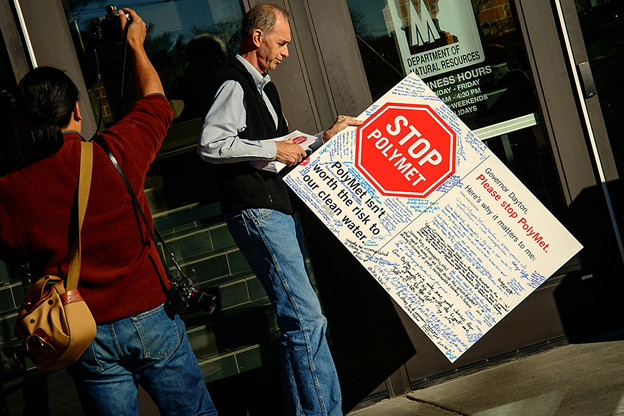

Marshall Helmberger on Minnesota’s dystopian future
Marshall Helmberger is — bar none — the best editorialist on the Range. Marshall is the publisher of the Timberjay newspapers. He is the best example of a courageous small-town newspaperman that I know of.
In a piece that was published on November 18th, Helmberger writes:
[O]fficials from the Bureau of Land Management received a crash course in two very different visions of the future for the North Country during a recent visit to Ely. It probably won’t be the last such visit as the BLM and the U.S. Forest Service determine how to respond to a request by Twin Metals to renew the only two federal mineral leases that have ever been issued on the Superior National Forest.
He then lays out a meticulous and visionary explanation of what the “snowplow” PolyMet mine really means, irrespective of the short term question of the renewal of the two federal leases:
The recent release of the Final Environmental Impact Statement on PolyMet’s proposed NorthMet mine has given fresh urgency to both sides in what has become a pitched political battle. And while it was not specifically on the agenda during the BLM’s visit, it’s clear that many sulfide mining opponents see potential approval of PolyMet as the beginning of the end for a lifestyle that has drawn a remarkably diverse mix of people and talents to the Ely area in recent decades.
Many, but not all, sulfide mining opponents see that potential. Helmberger continues:
[Mining], without question, would fundamentally change the character of this region, taking what is today the crown jewel of the national forest system in the eastern two-thirds of the country, and converting its heart into an almost continuous industrialized zone. And this is, perhaps, the biggest flaw in the just-released FEIS on PolyMet. When the DNR opted not to examine the cumulative impacts of this scale of development on the Superior, they chose to ignore the elephant in the room. They opted not to take the hard, scientific look they promised and produced a political document, instead.
When mining supporters talk of the Duluth Complex as rivaling the Mesabi Iron Range, or employing thousands of miners, and generating billions in state and local revenues, they don’t mean PolyMet with its projected 350 workers, on its own. They mean a half dozen mines or more comprising 50-to-80 miles of open pits, wasterock piles, rail lines, roads, power corridors and concentrator plants cutting through the heart of the Superior. [Marshall did forget tailings impoundments. ed.]
The problem with an economic model based on mining, after all, is that it doesn’t work unless you keep on mining until every last ton of ore has been blasted, processed, and shipped out. That means once mining of the Duluth Complex begins, the pressure to keep mining will be intense, at least until the ore is all gone or is no longer valuable enough to extract.
Helmberger recognizes this is what we’re signing up for if the PolyMet mine is approved.
The economic and political pressure on the region, including the BWCA, to mine it until it’s unrecognizable, would be inexorable. I believe it is unrealistic to expect federal regulators to appreciate the North Country the way Minnesotans do. Which is why sulfide mining will be stopped here, not in Washington, if it is to be stopped.
Let us hope and pray that the DNR and the governor understand that. Unremitting pressure to make sure they do understand it is required, by everybody. There are two things you can do to help:
First, you can send Governor Dayton an email to let him know of your opposition. You can bet that Mining Minnesota and supporters of PolyMet are sending the same message to their supporters. I list it first because it’s easier, and frankly, more likely to bear fruit.
Second, and a little more work, is provide a comment to the DNR on the FEIS. Pick the issue that scares you the most: financial concerns, damage to water in the St. Louis River watershed or the BWCA, or the health risk to Minnesotans. Or whatever it is that worries you.
A comment to the DNR should be in its hands by Friday, December 11th. (Since the 30th day for comments falls during the weekend, you might have until the next Monday, but don’t push it, people.)
It is time, truly, for the environmental community to stand on its hind legs and roar.
Thanks for your feedback. If we like what you have to say, it may appear in a future post of reader reactions.

